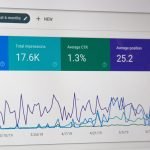Introduction.
When it comes to dropshipping, one of the most confusing parts is figuring out customs duties. If you’re importing products from China to the United States, you’ll eventually encounter this question: Who pays for customs, and how do I handle it?
Whether you’re new to dropshipping or have been in the game for a while, understanding customs is key to keeping your business running smoothly and avoiding unexpected fees.
Let’s break it down step by step so you can confidently handle customs duties. By the end of this guide, you’ll know what customs duties are, how they work in dropshipping, and how to manage them for your business.
What are Customs Duties?
Customs duties are fees imposed by a country on imported goods. Think of them as a tax the government charges to allow products to enter their borders. In the U.S., customs duties vary based on the product’s type, value, and origin.
For drop shipping, this means that when products are shipped from China to a U.S. customer, those goods may be subject to duties.
Why Do Customs Duties Matter in Dropshipping?
If customs duties aren’t handled properly, they can lead to unhappy customers, delays, or even seized shipments. For example:
- Surprise Costs: If you don’t account for duties upfront, your customers might get a bill from the courier. This can lead to complaints or cancellations.
- Delivery Delays: Customs clearance issues can hold up packages, making shipping times longer than promised.
- Legal and Financial Risks: Failing to pay duties can result in fines or legal trouble, depending on the severity of the issue.
Handling customs duties correctly can help you build trust with your customers and avoid unnecessary headaches.
Who Pays for Customs Duties in Dropshipping?
This depends on the shipping terms, specifically something called Incoterms. The most common Incoterms you’ll deal with are Delivered Duty Paid (DDP) and Delivered Duty Unpaid (DDU). Here’s what they mean:
- DDP (Delivered Duty Paid): You, the dropshipper, cover customs duties. The customer pays nothing extra after placing their order. This is great for customer satisfaction but can cut into your profit margins.
- DDU (Delivered Duty Unpaid): When the package arrives, the customer is responsible for paying customs duties. This can lower your costs but may frustrate customers who weren’t expecting additional fees.
In most cases, dropshippers use DDU because it’s simpler and cheaper. However, this could lead to issues if the customer isn’t informed beforehand.
How Do I Handle Customs Duties for Dropshipping From China to the US?
Here’s a simple plan for managing customs duties effectively:
1. Know Your Product’s HS Code
Every product has a unique Harmonized System (HS) Code. This code determines the duty rate for the item. For example:
- T-shirts might have a duty rate of 16.5%.
- Electronics like earbuds may have a lower rate, around 0-5%.
You can use the U.S. International Trade Commission (USITC) or consult your supplier to find the correct HS Code.
2. Estimate the Duty Costs
Once you have the HS Code, you can calculate the potential customs duties. Use tools like the U.S. Customs Duty Calculator to understand the costs. Remember, duties are typically calculated as a percentage of the product’s declared value.
3. Decide on DDP or DDU
If you choose DDP, you must work with your supplier or shipping partner to include duties in the shipping cost. For DDU, ensure customers know they’ll be responsible for duties, either in your product description or checkout process.
4. Work With Reliable Suppliers
A good supplier can help make customs clearance easier. Ask your supplier:
- Are they experienced with shipping to the U.S.?
- Do they provide accurate invoices and customs declarations?
Suppliers who mislabel goods or undervalue shipments can cause major customs delays.
5. Choose the Right Shipping Method
Certain shipping methods handle customs differently:
- Express Couriers (DHL, FedEx, UPS): These companies handle customs clearance for you but may charge additional processing fees.
- Postal Services (China Post, ePacket): These are cheaper but may result in longer customs processing times.
Tips to Avoid Customs Problems
- Be Transparent With Customers: Let buyers know in advance if they need to pay customs duties. Clear communication helps manage expectations.
- Provide Accurate Documentation: Ensure your supplier provides a proper invoice that matches the product’s value and description. Incorrect or incomplete documents can cause delays or penalties.
- Track Shipments: Use a shipping service that provides tracking updates to monitor the customs process and keep your customers informed.
- Stay Updated on Tariffs: Tariffs between the U.S. and China can change. Check trade agreements or consult a customs broker if you’re unsure.
FAQs
1. What Happens If Duties Aren’t Paid?
If duties aren’t paid, the package won’t be delivered. It may be returned to the sender or held at customs until the fees are cleared.
2. Can I Avoid Customs Duties Altogether?
For small-value items, duties may not apply. The U.S. has a de minimis threshold of $800, meaning packages valued under $800 are often duty-free. However, this doesn’t include all products, so check the rules for your items.
3. Should I Hire a Customs Broker?
If you’re shipping high-value or complex items, a customs broker can help. They’ll handle the paperwork and ensure your products clear customs without issues.
4. Are There Hidden Fees Besides Duties?
Yes, couriers like DHL or FedEx may charge a customs clearance or handling fee in addition to duties. Check with your shipping provider to understand the full cost.
Conclusion
Handling customs duties for dropshipping from China to the U.S. doesn’t have to be overwhelming. By understanding how customs work, choosing the right shipping methods, and being transparent with your customers, you can avoid most problems.
The key is preparation: know your products, calculate potential costs, and communicate clearly.
Now, let’s go over to you: How do you plan to handle customs duties in your dropshipping business?





GIPHY App Key not set. Please check settings